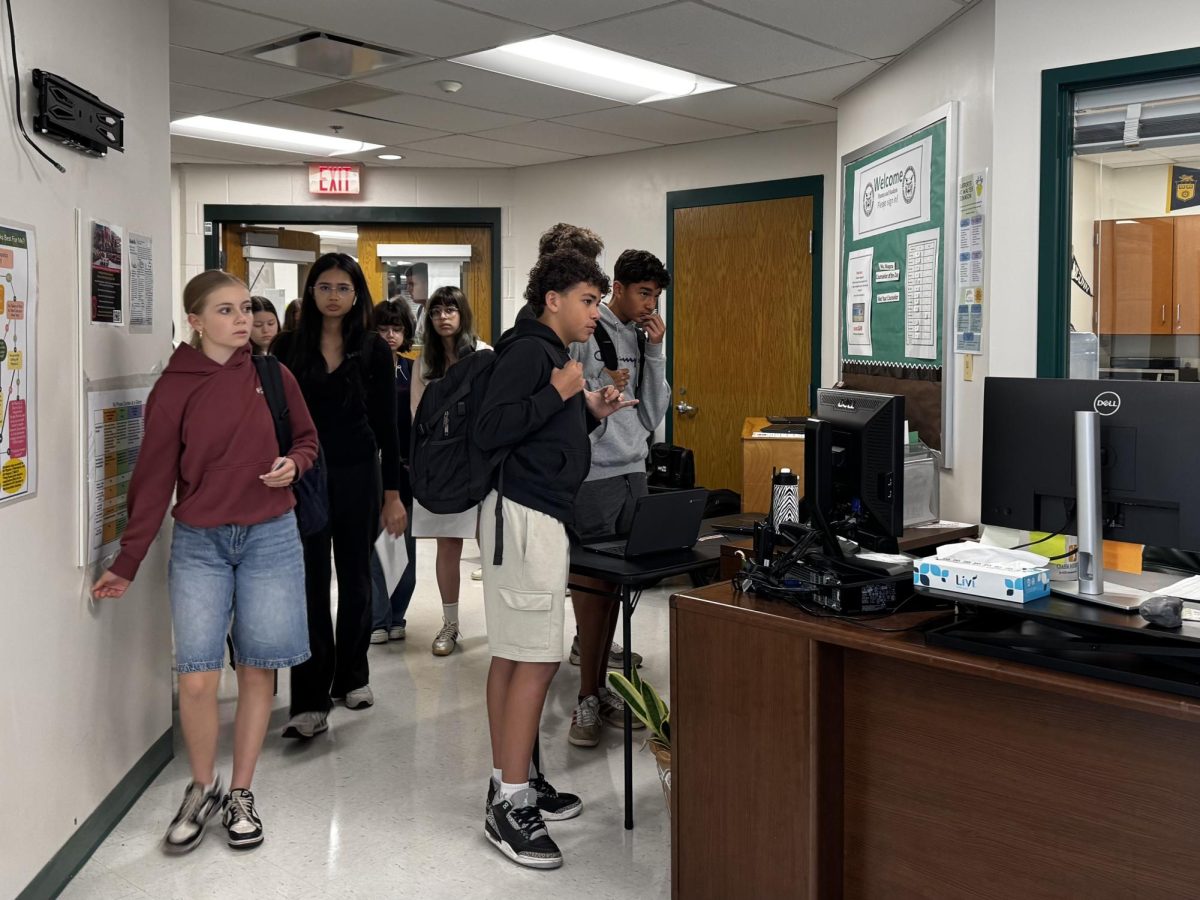DISCLAIMER: Do not attempt to trespass on any of the private properties mentioned in this article, including the Rock Spring estate. It is illegal and dangerous.
Unbeknownst to most Walter Johnson students, just a short walk from the main entrance to their school building lies one of the spookiest sights in Montgomery County: the abandoned and decaying Davis Mansion.
The eerie abode is located just out of sight from Wildwood and Georgetown Square, up a short dirt path and in the middle of an overgrown clearing. Its walls have been thoroughly covered in graffiti, its windows shattered or boarded up and its main entrances completely sealed off, all evidence of the near half-century the residence has been abandoned.
“The property is huge, there’s a house and a shed that are both run-down,” junior Cole Naylor, one of the property’s few recent visitors, said. “It definitely terrified me a little bit at first, but once I walked around and saw that there was no one there it was really cool.”
Despite its mysterious appearance, the mansion (also known as Rock Spring estate) was once part of a large and prosperous farm in the area, which was owned by two of Bethesda’s most historically prominent families during its lifetime. Today, the building remains as the final remnant of a long-forgotten era in WJ’s past.

History:
In 1851, the 400-acre stretch of farmland that would eventually become the WJ neighborhood was bought by Samuel Clark Veirs Jr. and his wife Hester Whitaker Veirs. The Veirs family became wealthy after Samuel Veirs Sr. founded a highly successful grist mill in the area, which became the namesake of Veirs Mill Road and Viers Mill Elementary School.
The couple built their family home on the land just a year later, in which they raised 10 children. Draft records show that Samuel was drafted into the Union Army at some point during the Civil War, but it’s unclear whether or not he actually saw combat.
After Samuel’s death in 1898 and Hester’s in 1905, the land changed hands several times before being bought by Washington DC businessman Floyd E. Davis in 1911. Although Davis gained most of his wealth through banking and real estate, he retained a love of farming from his upbringing in rural Virginia, and established the highly successful Davis Farm on his extensive property.
“We had barns with work horses and riding horses, windmills, pigs, lambs, milk cows and Black Angus cattle. My father loved gardening, he had beautiful boxwood and magnolia. When I was in grade school, the school would take my whole class out to visit the farm and see the animals,” Anne Davis Camalier, daughter of Floyd Davis Sr., said.
Most of the WJ neighborhood was built on the vast fields which used to make up Davis Farm. This includes popular afterschool spot Davis Library (the land for which was donated by the Davis family), as well as the WJ school building itself.
“As the county grew, [Floyd Davis] was approached by them because they wanted 11 acres of land for Walter Johnson High School. He didn’t want to break up the property, so he offered to purchase 11 acres anywhere else in the county, but they said ‘no, we want the school here.’ That’s how Walter Johnson came about,” Camalier said.
Although many animals were raised there, Davis Farm’s primary focus was raising Black Angus cattle, herds of which would roam the fields surrounding WJ for over a decade after Floyd Davis’ death in 1961. His legacy lives on through the unofficial school mascot these cows inspired: Mighty Moo.

After Davis’ death, the property passed to his wife Noreen Davis and their children, who continued their land’s extensive development. Over the next 40 years, most of the farmland would be built up into the array of office parks and shopping centers which follow Old Georgetown Road today, while Davis Mansion and the few acres of remaining rurality were left to deteriorate.
Numerous plans for this land have been drawn up, revised and eventually scrapped over the decades. These possible projects varied from major hotels to huge apartment complexes, but each one fizzled out before being approved.
“We had a couple different groups who said they were going in there but they all fell through. There was a group about 15 years ago called Canyon Ranch, this really fancy hotel and condominium. They were going to do a massive project over there, they even met with us about it, but it fell through at the last minute,” social studies teacher Christopher Merrill said.
Future:
Development plans for the Rock Spring project were approved in 2020, over 30 years after the planning process began, and its construction is expected to begin in 2025.
According to development plans, the large property will be transformed into a Pike and Rose-style shopping center, complete with fast food restaurants and towering apartment complexes. Although the current forest will be cut down, public parks and green spaces will exist throughout the area.
As for the Davis house itself, its future is yet to be determined. The Davis-Camalier family currently plans on moving the building toward the middle of the property, where it might become a restaurant or conference center.
Until its movement or transformation, the Rock Spring estate will stand as a monument to Montgomery County and WJ’s history. Much of the house’s future remains uncertain, but no matter what lies in store for the harrowing habitation, the history it represents is sure to live on in WJ culture for many years to come.
















Adrienne • Dec 14, 2024 at 12:43 pm
I remember that farm. You could see the cows and the farm hand who lived in the house He was very nice Unfortunately that house caught on fire and was a very sad sight to see there were a lot of people on the other side of democracy bulivard , just watching. I don’t know what happened to them. after that.